Vietnam Food Guide: The Culinary delights of Vietnam
Walk through any Vietnamese city and you’ll be struck by the sights, sounds and smells of food being cooked, sold and eaten. While its culinary influences are widespread – Chinese, Thai, Khmer, French and Indian – and reflect the country’s rich history, Vietnam food is very distinctive. Vietnamese cuisine is fresh, interesting and my personal favourite of anywhere in the world.
For the purpose of discussing food in Vietnam, it’s best to roughly divide this long, narrow country into three areas – the north, middle and south. While well-known dishes are widespread throughout the land, some are distinct to their region.
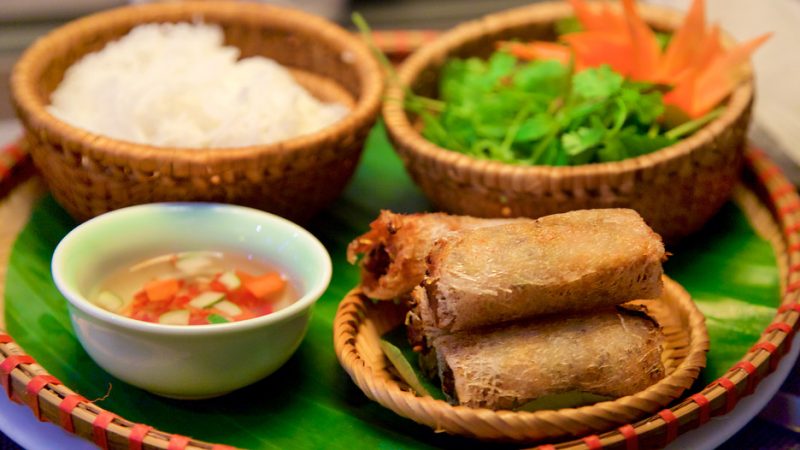
![]()
Vietnam Food in Hanoi and the North
Major Influence: Chinese and French food
In the north, including Vietnamese capital, Hanoi, and popular tourist destination, Ha Long Bay, food is influenced more by its northern neighbour China compared to down south, with soy sauce added to many dishes. Its cooler climate is also reflected in the cuisine and the local fare has less heat due to a preference for black pepper rather than chillies. However, similar to other parts of the country, limes, fish and fish sauce are frequently used for that distinctive Vietnamese flavour.
In addition to established restaurants, food stalls and street kitchens are everywhere and it’s well worth trying these for some cheap and tasty food.
Cheap Vietnamese Street Food in Hanoi
In Hanoi, visit the restaurants and stalls around the city’s Old Quarter for some of the best value-for-money options. There’s also a wide selection of eateries around Hoan Kiem Lake, with pricier restaurants found in the French Quarter.
Cha Cha La Vong
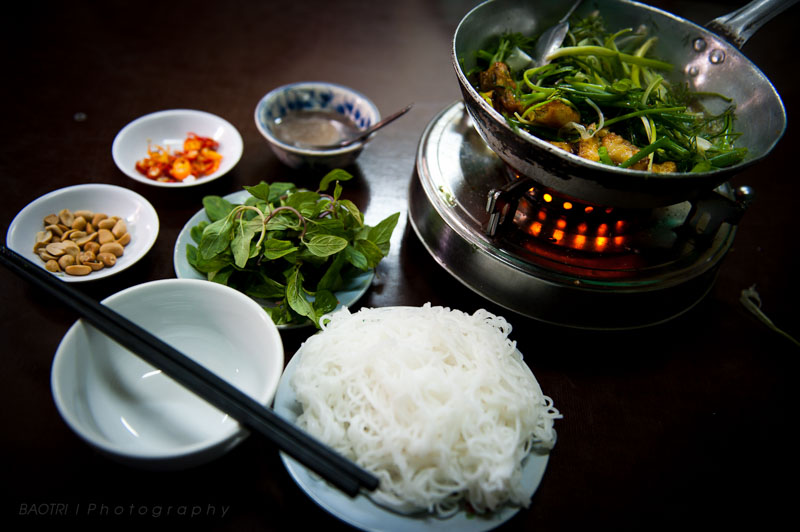 Cha cha la vong / CC by 2.0 / Tri Nguyen
Cha cha la vong / CC by 2.0 / Tri Nguyen
One Hanoi speciality is cha ca la vong or Hanoi turmeric fish. This delicious grilled fish dish is marinated – often for hours so the flavours are fully absorbed – in garlic, dill and turmeric and cooked in front of you on an individual stove. It originated in the famous Cha Ca La Vong restaurant in the Old Quarter, which is a one-dish-only joint, but there are now many versions served all over Hanoi.
Bun Cha
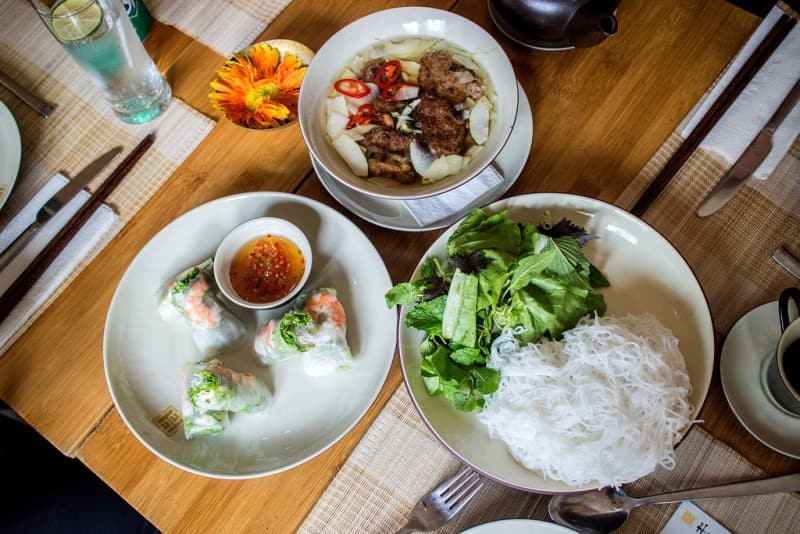 Bun Cha / CC by 2.0 / Frances Ellen
Bun Cha / CC by 2.0 / Frances Ellen
Another Hanoi specialty is bun cha. Bun – thick rice noodles – is found all over the country, but this particular delight is made with pork, herbs, bean sprouts and pickled vegetables. Poured over the entire dish is the ubiquitous nuoc cham, which is a tasty dipping sauce usually comprised of fish sauce, lime juice, rice vinegar and garlic.
Bun cha is often topped with delicious deep-fried shallots that not only add a burst of flavour but give a lovely textural crunch, too, and is one of the many small ways that make Vietnamese food so appealing.
Vietnamese Pho
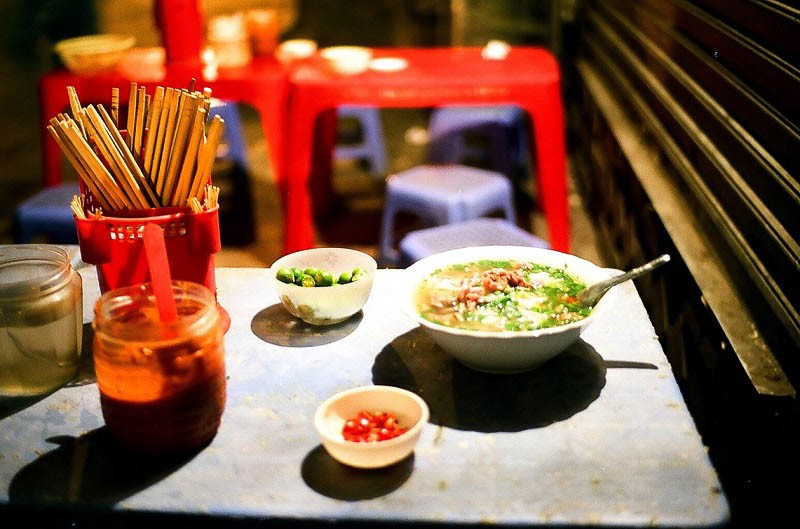 Pho bo / Getty Images
Pho bo / Getty Images
Famous, delicious pho can be found throughout Vietnam, but is said to have originated in the northern region in the early 20th century. This rice noodle soup usually has a rich chicken or beef stock base and is made with Vietnamese basil, lime, bean sprouts and chillies. For the beef version, pho bo, the raw meat is often cooked in a hot pot at the table.
French Vietnamese Food in Hanoi
The French influence is strong in Hanoi – it was the capital of French colony, Indochina, for the first half of the 20th century and this shows in the Vietnam food scene in the city. There are many French restaurants on offer in Hanoi, and a widespread cafe culture.
Banh Mi (Vietnamese Baguettes)
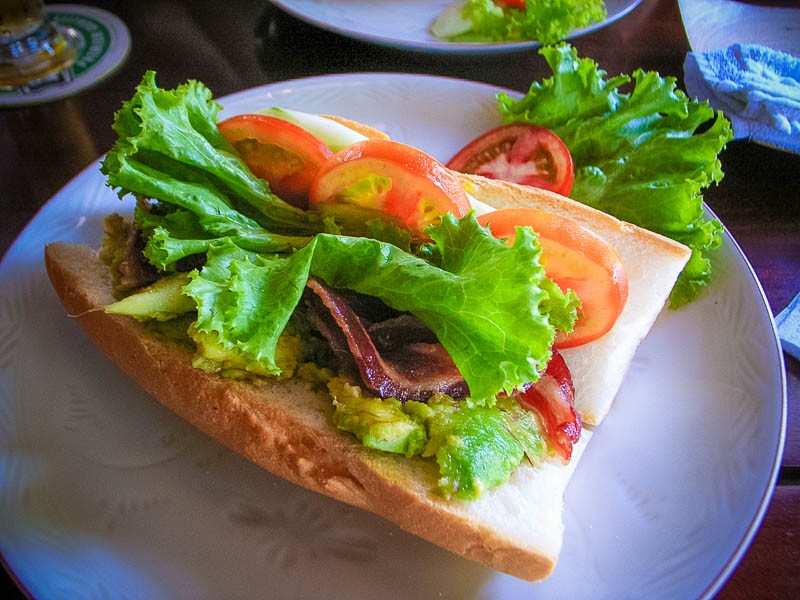 Banh mi / CC by 3.0 / Yuko Honda
Banh mi / CC by 3.0 / Yuko Honda
Its biggest legacy, however, has to be banh mi (Vietnamese baguette), which are the perfect fusion of French and Asian flavours. Banh mi, served on many street corners as a quick and easy snack, is made with Vietnamese bread rolls, which are a mixture of rice and wheat flour for a lighter bread.
The savoury filling is frequently pork, but sometimes chicken or tofu, with pickled carrots, daimon, fresh herbs and a distinctive, tasty pâté. Next to pho, the baguette is among the most well-known and loved Vietnam food specialties.
![]()
Food in Central Vietnam
Major Influence: Ancient Vietnamese royal cuisine
The former capital city, Hue, is celebrated for its food, too, and is said to be influenced by the ancient cuisine of Vietnamese royals – it tends to be more decorative, with rich, complex flavours. Dishes are often small but there can be many of them.
Bun Bo Hue
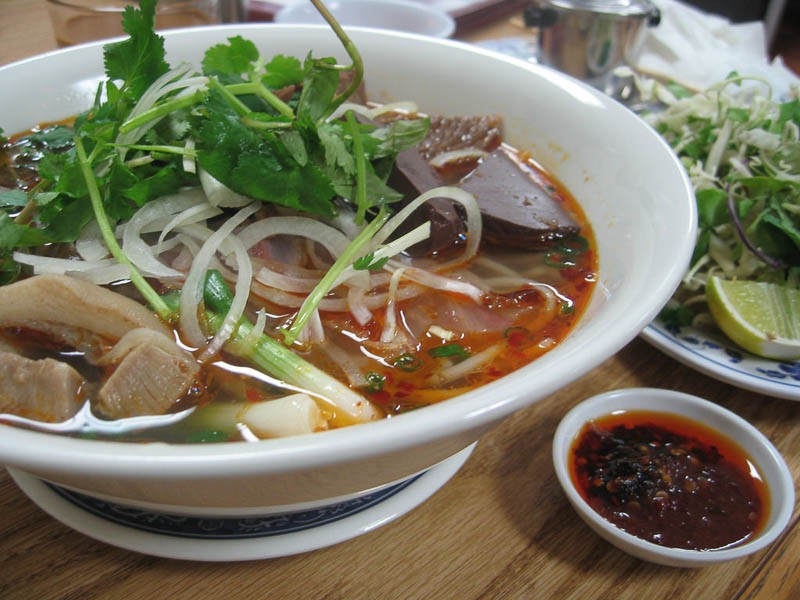 Bun Bo Hue / CC by 3.0 / Ron Dollete
Bun Bo Hue / CC by 3.0 / Ron Dollete
If the soup of Hanoi is pho, then the signature soup of Hue is bun bo Hue, which might suit those who prefer spicier, more complex flavours. This noodle soup is made with lots of lemongrass and usually both pork and beef for a rich, hearty stock. Round rice noodles make it a filling soup and it’s quite different to the more delicate pho.
Banh Khoai (Happy Pancakes)
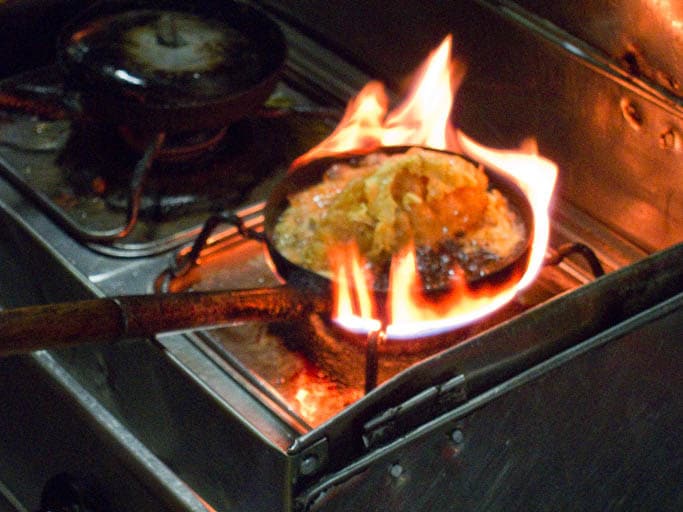 Banh Khoai / CC by 3.0 / Charles Haynes
Banh Khoai / CC by 3.0 / Charles Haynes
Another must-try when it comes to Vietnam food is Hue’s famous pancakes – banh khoai (happy pancakes), which are served open, and banh xeo (sizzling pancakes), which are usually folded. Both are made from turmeric-infused rice flour and are filled with prawns, pork, egg and bean sprouts.
They’re served with sweet and sour and peanut sauce and topped with aromatic herbs. Both are delicious and make a great snack.
Banh Beo
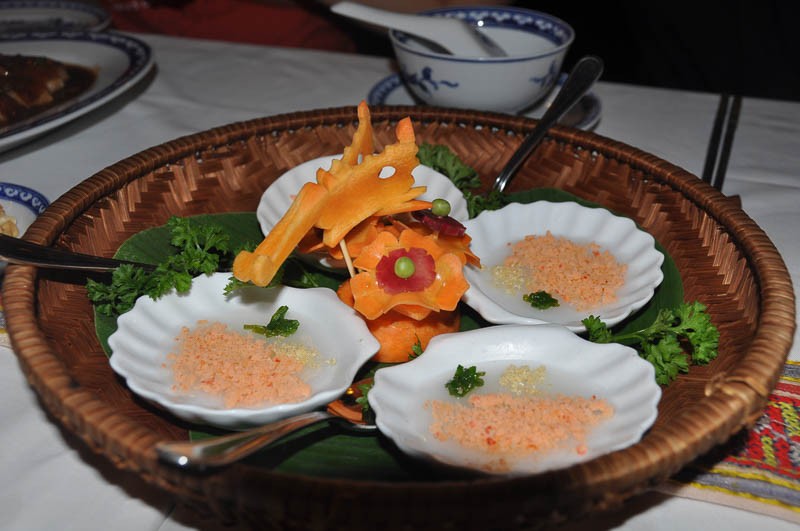 Banh Beo / CC by 3.0 / Trans World Productions
Banh Beo / CC by 3.0 / Trans World Productions
Also try banh beo, which are little rice cakes topped with prawns, crispy shallots, mung bean paste and fish sauce. Considered a taste sensation, it makes a perfect daytime snack food.
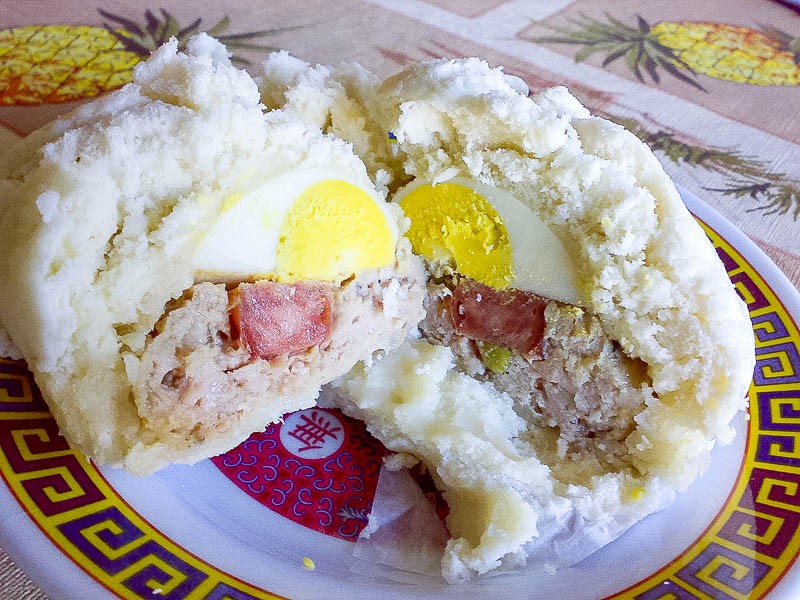 Banh Bao Banh Vac / CC by 3.0 / Mini923
Banh Bao Banh Vac / CC by 3.0 / Mini923
Further south is the beautiful city of Hoi An, which has its own take on Vietnamese cuisine. A must-eat there is delectable banh bao banh vac, or white rose parcels, which are dumplings made with rice flour and filled with ground prawn meat. These are topped with crunchy garlic and served with a sweet dipping sauce.
![]()
Food in Southern Vietnam
Major Influence: Thai and Cambodian
Ho Chi Minh City is a gourmet paradise. It’s so cosmopolitan, you could eat a different cuisine there every night – French, Indian, Korean or Japanese, just for starters – but begin with the city’s dazzling array of Vietnamese food, either in a restaurant or from one of the many street stalls throughout the city.
The influences here are less Chinese and more Thai and Cambodian. Food tends to be sweeter compared to what’s available in the northern region, but it’s also spicier, with tropical fruits and coconut milk used more frequently.
Seafood along the Vietnamese Coast
With a coastline stretching over 3000km, Vietnamese cuisine is traditionally rich in seafood and this is very much the case in and around Ho Chi Minh City.
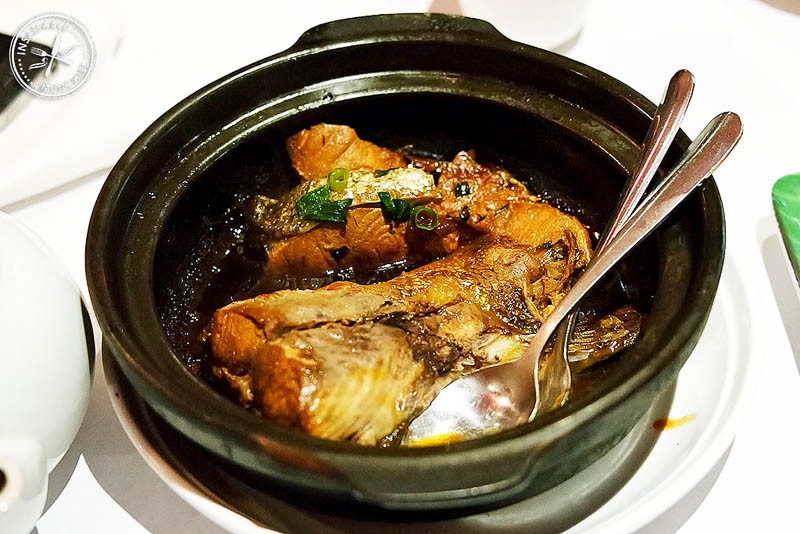 Ca kho to / CC by 3.0 / insatiablemunch
Ca kho to / CC by 3.0 / insatiablemunch
Ca kho to is a fish stew cooked and served in a clay pot. It can be found around the country but this Vietnam food specialty is particularly popular in the south. It’s a beautiful dish made from a fusion of sweet, salty and spicy flavours that merge together with soft, braised fish for a wonderful taste sensation.
Com tam
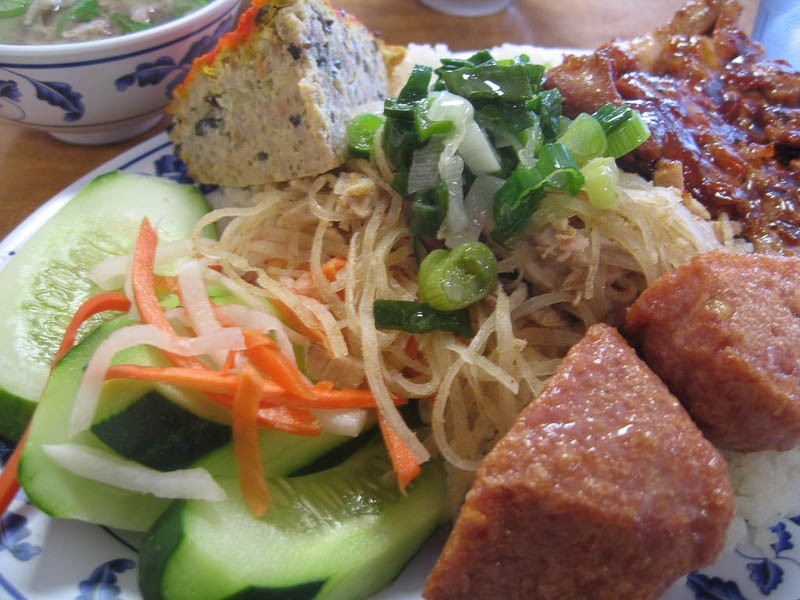 Com tam / CC by 3.0 / Ron Dollete
Com tam / CC by 3.0 / Ron Dollete
For a quick breakfast or easy lunch or dinner, try com tam, or ‘broken rice’. What originated as a peasant dish is now served all over Vietnam as a simple, filling snack. It’s usually served with steamed pork and egg or barbecued pork and fried egg and is accompanied by pickled vegetables and, of course, nuoc cham.
Goi Cuon (Salad Rolls)
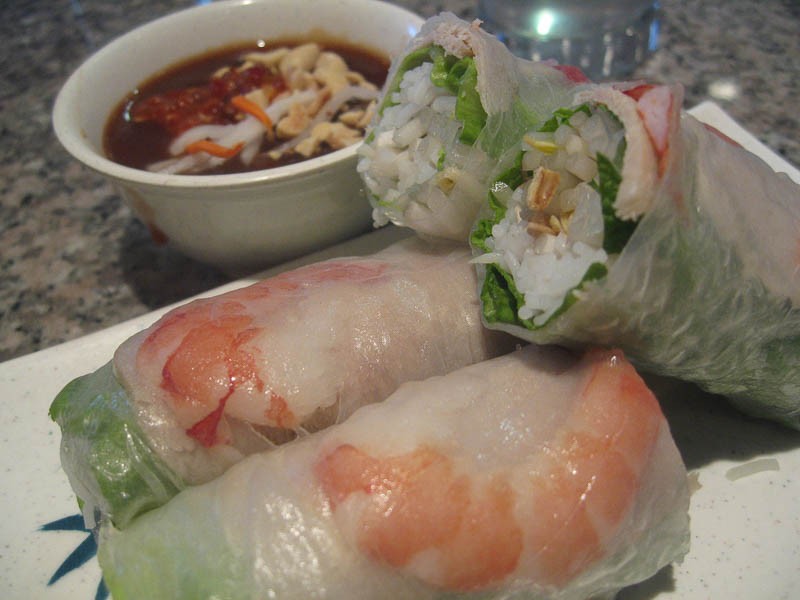 Goi Cuon / CC by 3.0 / Ron Dollete
Goi Cuon / CC by 3.0 / Ron Dollete
Goi cuon, or salad rolls, are served throughout Vietnam in different variations, but the Saigon ones are divine. These are fresh rolls served in rice paper, often stuffed with pork or prawns or both, as well as herbs and vegetables and dipped in nuoc cham or a rich peanut hoisin sauce.
The fried spring rolls, cha gio, are filled with ground pork, prawn or chicken and noodles, fungus and other vegetables. These are equally delicious and it just depends on what you’re in the mood for.
Vegetarian Food in Vietnam
There is plenty of vegetarian food to be found in Ho Chi Minh City and Hue.
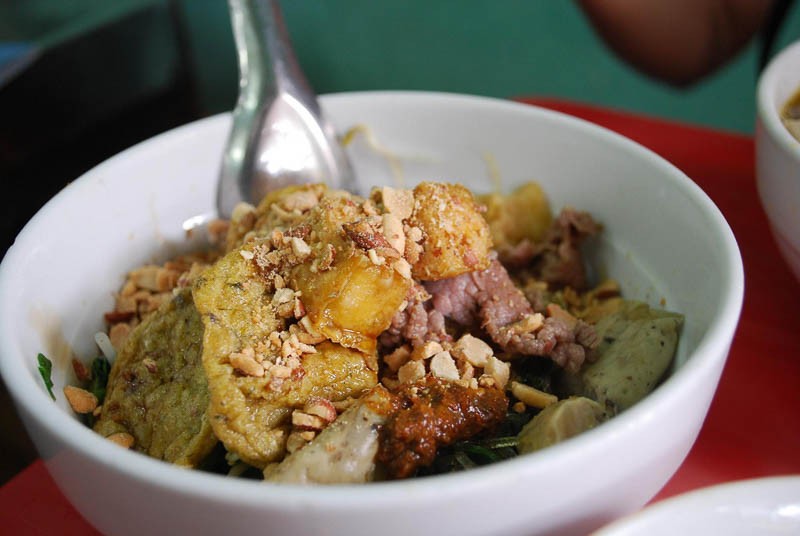 Bun Rieu Cua Kho / CC by 3.0 / Alpha
Bun Rieu Cua Kho / CC by 3.0 / Alpha
Tofu is found on many Vietnam food menus, as well as mixed greens, such as stewed spinach, and blends of onions, tomatoes, mushrooms and peppers. Just note that Vietnamese soup stocks generally use meat as its base.
Any culinary tour of Vietnam should include a trip into the wet markets, which are a riot of colour, smells and sounds and offer the chance to witness the origins of this wonderful fare.
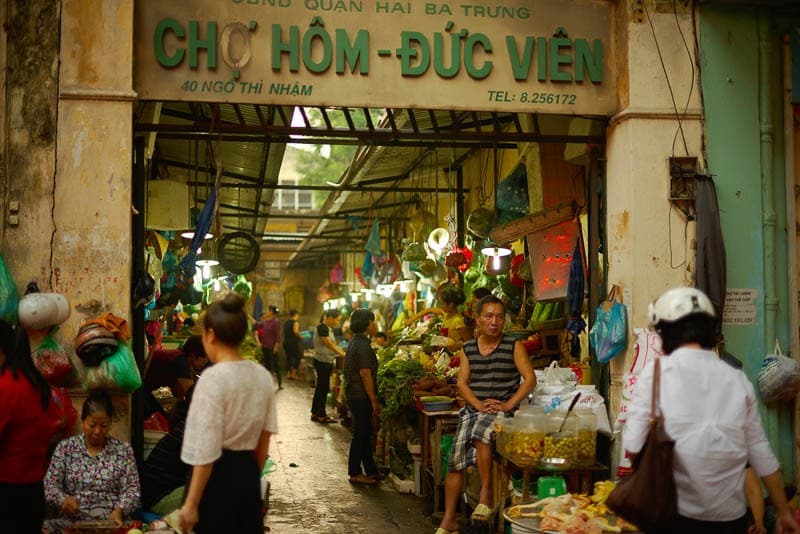 Vietnamese wet market / CC by 3.0 / Nicolas Lannuzel
Vietnamese wet market / CC by 3.0 / Nicolas Lannuzel